Yoga and the Treatment of Acid Reflux
This is also called Gastroesophageal Reflux (GER).
Acid reflux is a common condition. Approximately 20% of the population has had acid reflux, either occasionally or regularly. Gentle Yoga can relieve the symptoms of Acid Reflux by firstly reducing stress, a major contributing factor to GER, then the poses massage the internal organs and re-direct the flow of Acid.
The backward flow of acid from the stomach into the esophagus causes Acid Reflux. The acids may give heartburn and taste unpleasant in the back of the throat. Symptoms may worsen when you lay down too quickly after eating or if you bend over. If you have acid reflux more than twice per week or if it starts to affect your everyday life, you may have a condition called Gastroesophageal Reflux Disease (GERD). This condition could lead to damage of your esophagus so it is best to visit your doctor immediately.
In a study on GERD, 45% of the people researchers surveyed identified stress as a lifestyle factor that impacted their reflux symptoms. They also found that an increase in stress leads to an increase in how much acid the stomach secretes. More acid may mean more opportunity for reflux to cause symptoms.
Researchers went on to explore the relationship between yoga and stress, and they found that yoga might help lower the body’s stress response. They found some evidence that yoga may be an effective treatment for GERD and even peptic ulcers.
Researchers for this study didn’t look at yoga as a standalone treatment but rather as part of an overall treatment plan. More studies are necessary to evaluate the effectiveness of yoga as a standalone treatment.
Everyone responds differently to the different yoga postures. If a move doesn’t feel comfortable or if it makes your acid reflux worse, back off and concentrate on the ones which work for you. Adding yoga to your treatment plan should help relieve stress and improve your condition.
Here are some tips to incorporate Yoga into your Treatment Plan for Acid Reflux or GERD:
It is best to start with some deep-breathing work and to do this in a seated position as lying down can prove problematic for reflux sufferers. The deep breathing can help to relieve stress and balance your whole body. The following five poses are great ones to practice if you have reflux issues.
Marjariasana or Cat Pose 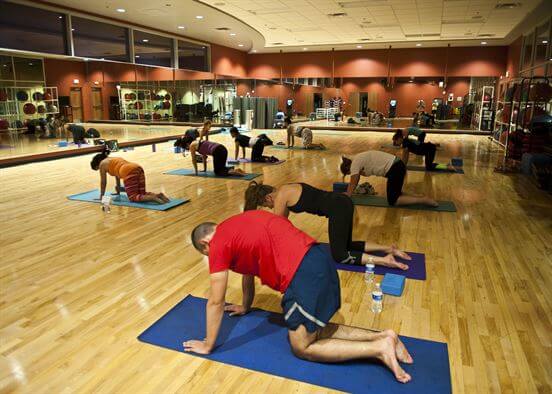
Benefit – This asana is always done in combination with Bitilasana or Cow Pose which arches the lower back in the opposite direction as the head is raised upwards. They work on the core and also benefit the spine and the abdomen. Practicing this asana enhances blood circulation and massages the digestive organs and so provides relief from acidity.
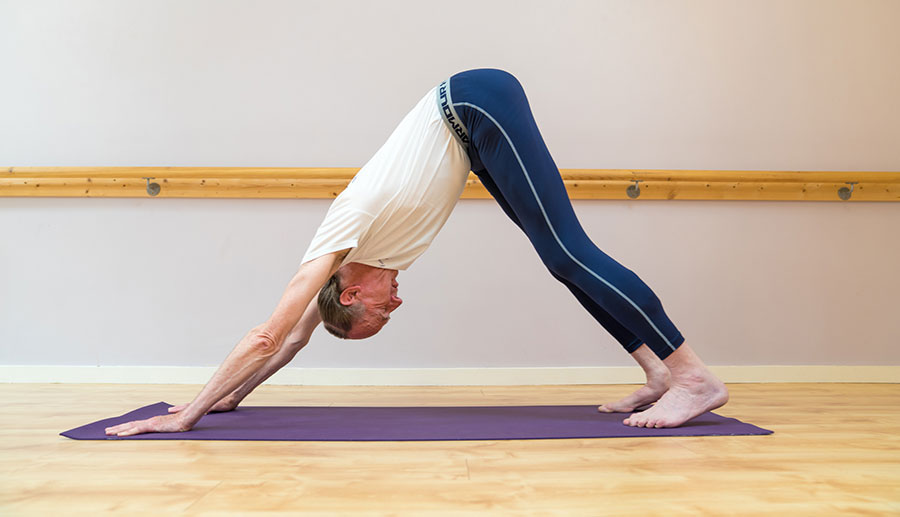 Adho Mukha Svanasana or Downward Facing Dog
Adho Mukha Svanasana or Downward Facing Dog
Benefit – This asana is not an extreme fold like Uttanasana and is thus usually safe to practice. However, if you feel any discomfort, come out of it. The weight of the body is shifted to the arms and legs when you do the Downward Dog. This asana helps to oxygenate your abdomen, which relieves the burning sensation.
Virabhadrasana II or Warrior II 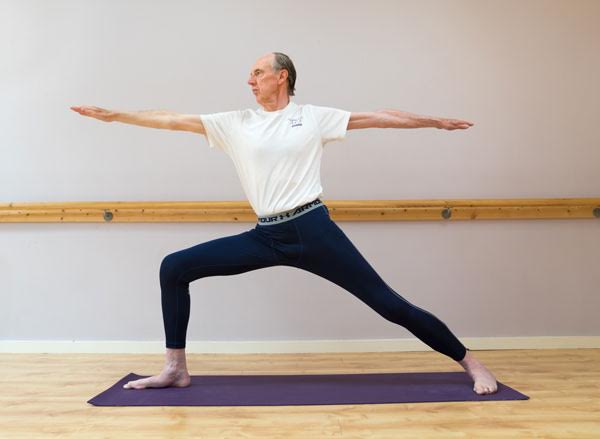
Benefit – The Warrior II is a powerful yoga pose for acid reflux relief. It strengthens the digestive system and relieves acidity. It also ensures proper functioning of all the organs and cures other stomach-related problems.
Ardha Matsyendrasana or Half Lord of the Fishes Pose 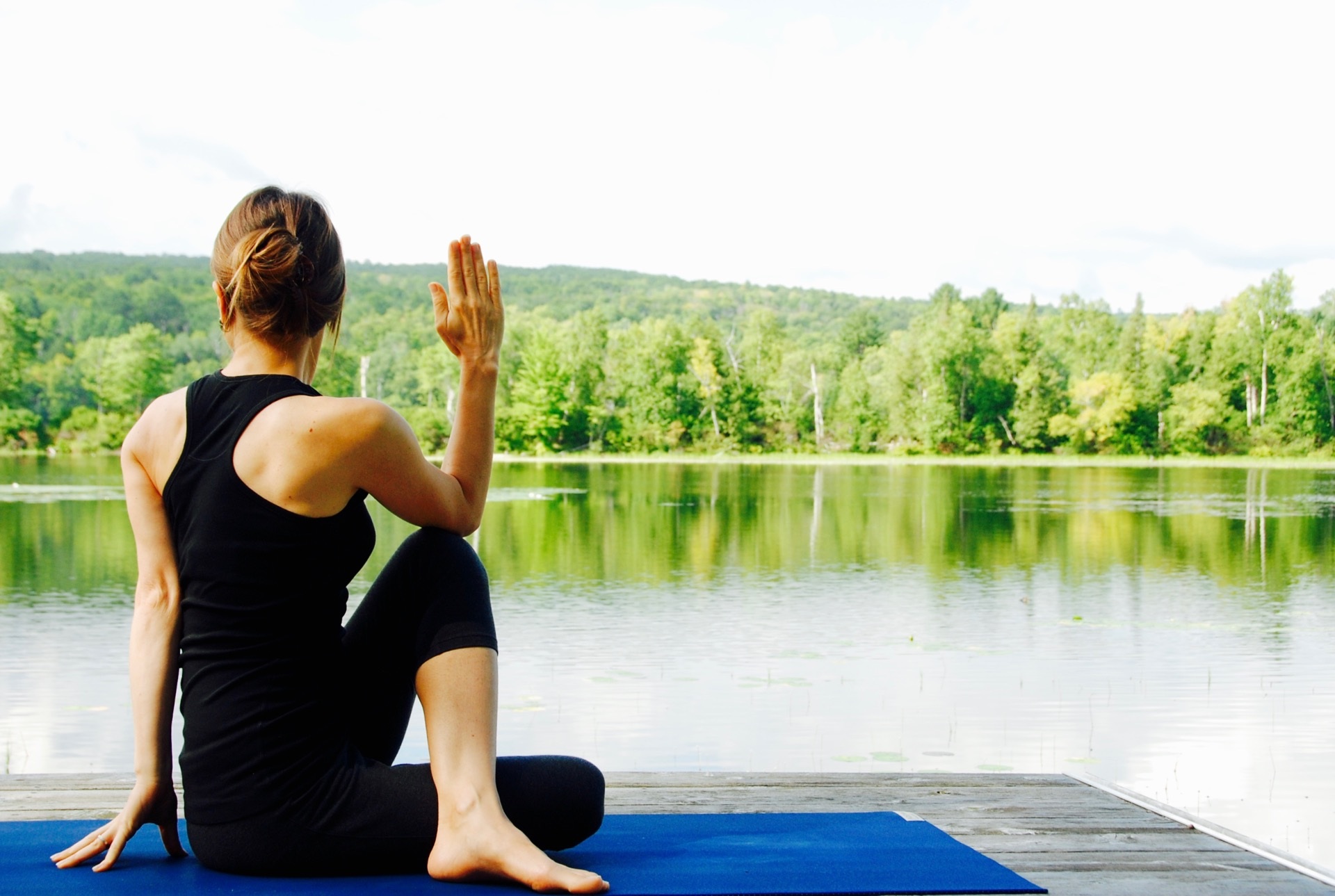
Benefit – A twist is the best detox you can give your system. It flushes out toxins and increases blood circulation. This, in turn, oxygenates your digestive system and reduces acidity.
Balasana or Child’s Pose
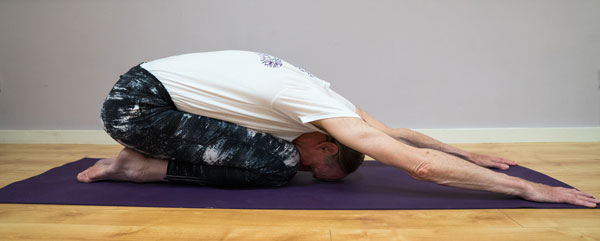
Benefit – Balasana is a restorative pose. It relaxes the system and relieves bouts of acidity. When you are in this asana, your abdominal organs are also massaged and strengthened.
Downward Facing Dog:
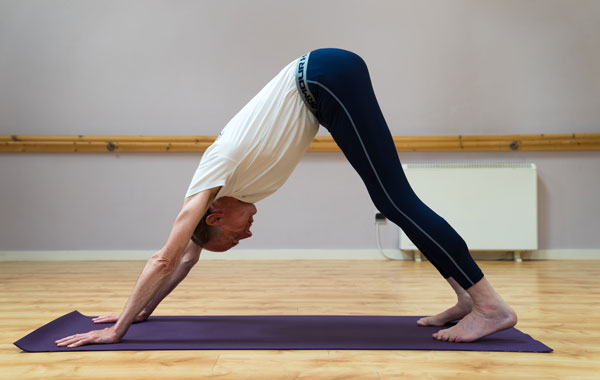
In addition to Virabhadrasana II or Warrior II , illustrated above, other great standing postures to practice if you have reflux problems are Tadasana or Mountain Pose; Utkatasana or Chair Pose; Virabhadrasana I, or Warrior I; Trikonasana, or Triangle Pose and Parsvottanasana or Side Stretch with Upright Modification.
In addition to Ardha Matsyendrasana or Half Lord of the Fishes Pose, illustrated above, other great seated postures to practice if you have reflux problems are Supta Baddha Konasana or Reclining Bound Angle Pose and Supported Supta Sukhasana or Reclining Easy Cross-Legged Pose.
It is best to avoid strenuous moves or inverted poses that might cause acid to flow up. Even with Savasana or Corpse Pose, at the end of your practice, which is everyone’s favorite pose, can cause problems so it is best to do it with an elevated head using a block for added security.

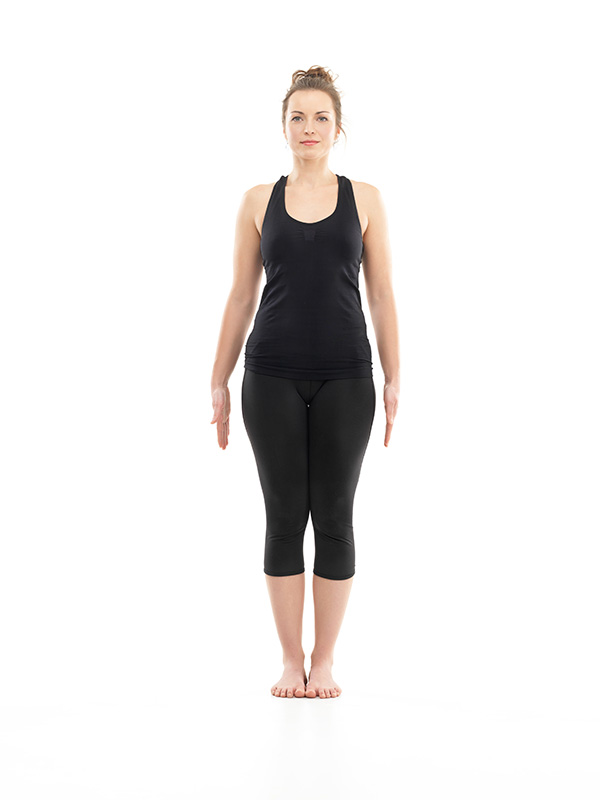
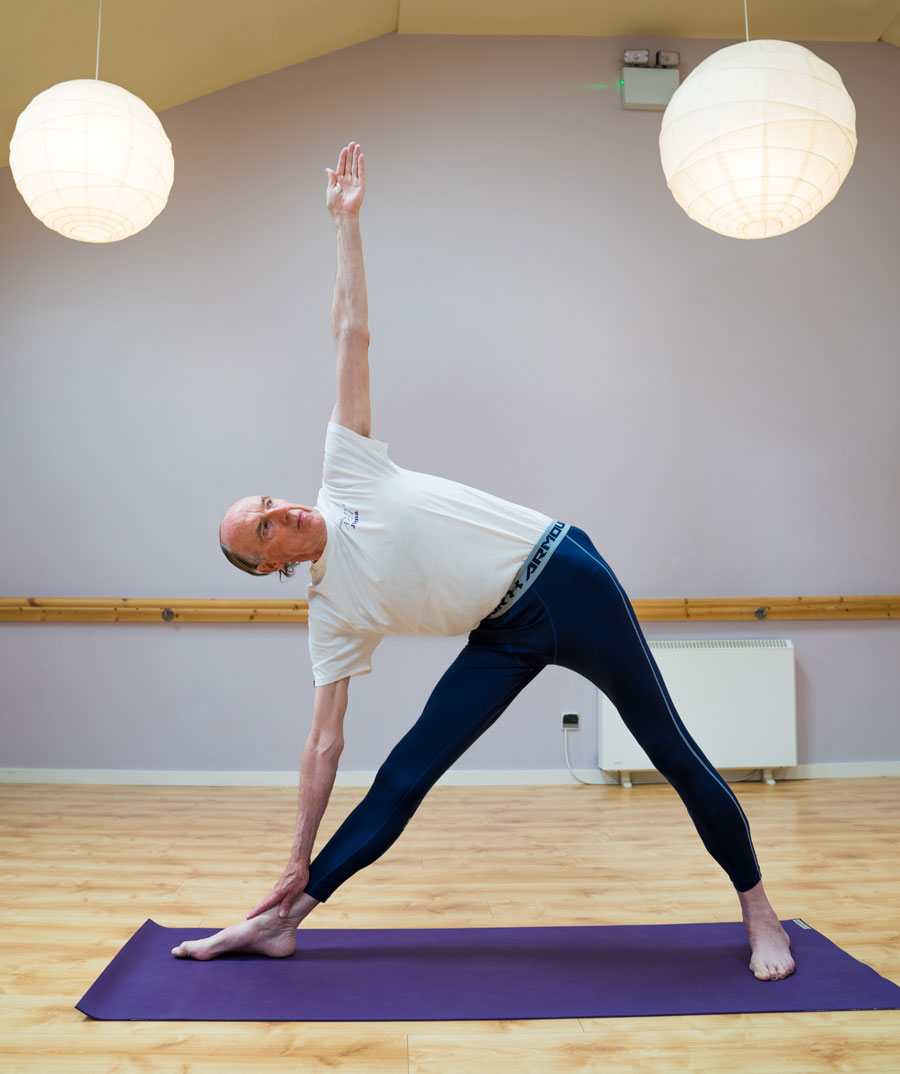

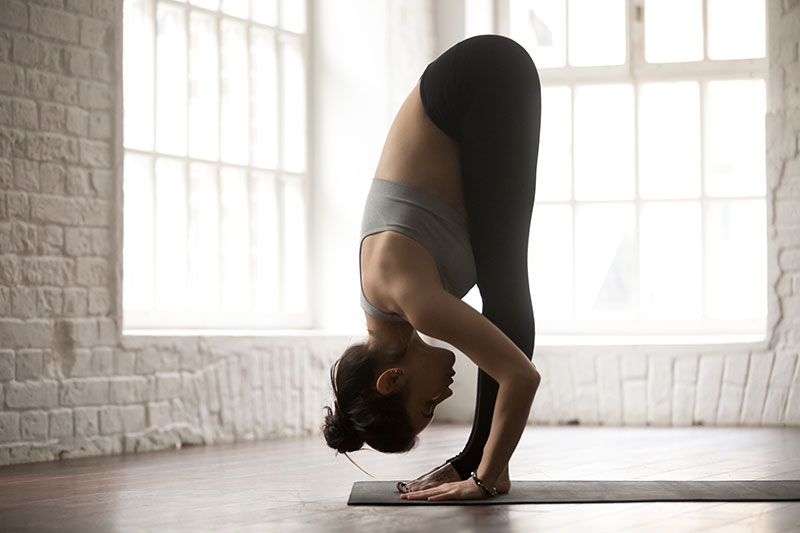
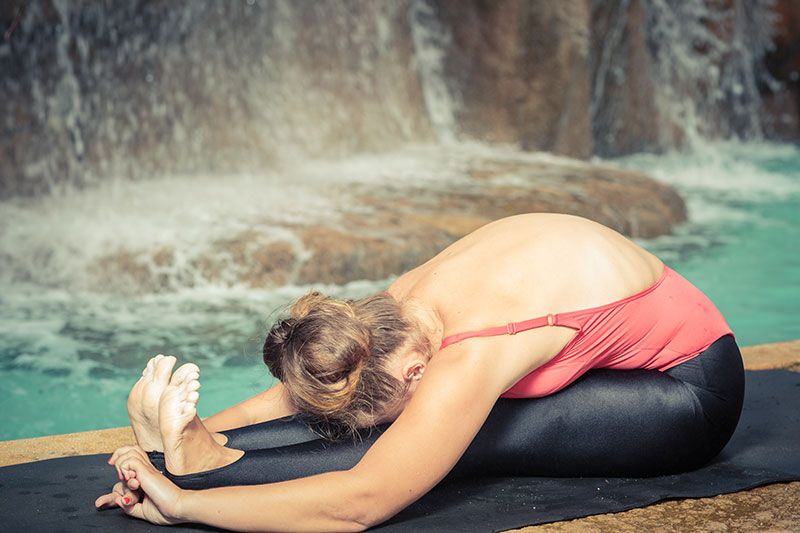



 Adho Mukha Svanasana or Downward Facing Dog
Adho Mukha Svanasana or Downward Facing Dog

